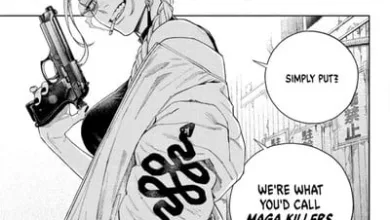Once upon a time, Gainax was the infallible studio that birthed Evangelion, Gunbuster, FLCL…and that magical girl show sponsored by car brand Subaru. It wasn’t all giant robots and rainbows. Steve and Nick look back on the animation studio in the wake of its bankruptcy.
Disclaimer: The views and opinions expressed by the participants in this chatlog are not the views of Anime News Network.
Spoiler Warning for discussion of the series ahead.
Gurren Lagann, Panty & Stocking with Garterbelt, The Mystic Archives of Dantalian, Gunbuster, and FLCL are currently streaming on Crunchyroll, while Otaku no Video is available on Retro Crush. Stella Women’s Academy, High School Division Class C3 is currently streaming on HIDIVE. Neon Genesis Evangelion and Forest of Piano are on Netflix, and FLCL: Grunge is on Max.
Steve
Nick, what’s the deal with Gainax? They’ve got “gain” in their name but lost all their money! They should call themselves Lose-ax!
I’ve had about a decade to develop that joke, and that’s the best I could do. Sorry.
Nick
Here’s some better jokes then, Steve:
Uru in Blue
Gunbuster 3
The Zero Century Emeraldas
I’d give some more, but honestly, there’s so much Gainax vaporware out there that I’ve forgotten most of it.
Oh, trust me, we’ll get to the many scattered vestiges Gainax has left in its wake, but first, we should pay our respects. After what feels like a decade of total irrelevancy and false promises, the incomparable Studio Gainax has officially given up the ghost. That’s a pretty big deal, even if they have barely been an anime studio for the past nine years.
It’s a huge deal! This was the studio that appointed itself the vanguard of anime otakudom. A scrappy collection of university buddies who came together to make the kind of animation they wanted to see. A group of artists who produced one of the most undeniably canonical works in the medium, let alone the string of other classics bearing the Gainax brand, both figuratively and literally. Gainax‘s identity was so strong that the fandom came together and named the act of animating gratuitously jiggling breasts after the studio. That’s a legacy.
It’s a legacy so powerful that people forget that half of the shows they made sucked ass! But we’ll get to that. For now, though, I suspect some younger readers might not get what the deal is, and they need to understand their history to appreciate how tragic and completely fitting this situation is. Also, if I see one more person call
Gurren Lagann a
Studio Trigger show, I’m liable to dunk them in the toilet.
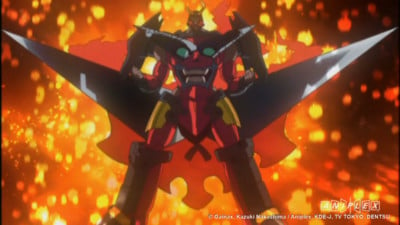
To be fair, there is no Trigger without Gainax, and more specifically, there’s no Trigger without Gainax‘s woeful mismanagement. But their beginnings were humbler. As I said, it was a bunch of university friends, including the likes of Hideaki Anno, Yoshiyuki Sadamoto, and Shinji Higuchi. Some of these people would go on to be household names (if you lived in a particularly nerdy household), but they started in the ’80s with a small studio called Daicon Film. And I can’t blame youngsters too much for not knowing about this because their most famous early work, Daicon IV, can’t be found on any official channels because they used unlicensed ELO music to soundtrack it. It was the wild west back then.
Some details were changed to protect the (not) innocent.
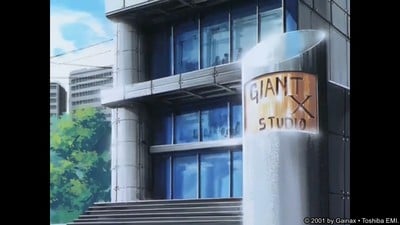
That’s what we call foreshadowing.
It’s legit quite surreal to look at
Otaku no Video now, with
Gainax essentially becoming the soulless corporate monolith they were in part railing against with the creation of that OVA, alongside their self-mythologization. I guess you die the hero or live long enough to see yourself become the villain. After this, you also die because you run out of money.
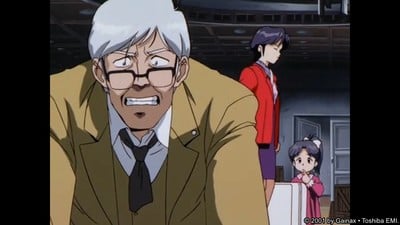
It’s like one of those oddly prescient Simpsons bits that go on to predict real-life events years later. Or the folks who made it just saw the writing on the wall 30 years ahead of time. Either way, it’s certainly odd to see the studio finally go. I was born too late to witness Gainax‘s golden period, but even in the late 2000s, the name still carried a ton of respect and history.
I’d put down 2010 as Gainax‘s final year of actual notoriety. Panty & Stocking was a phenomenon. It made waves. It flipped birds. Though, again, I bet if you asked people, a good portion of them would say that it was a Trigger anime just because Imaishi’s style is so recognizable. Hmm, it’s almost like the artists themselves, not the name of the studio they work for, are most important when it comes to making a show come together. Let’s put a pin in that.
Oh Steve, how could you leave out such hidden gems of the 2010s as
Medaka Box,
Stella Women’s Academy, High School Division Class C3, and
The Mystic Archives of Dantalian from their illustrious history?

Look, I actually liked
Stella C3 well enough. It’s a neat little show with a charmingly and ostentatiously melodramatic twist on cute club anime (this time with airsoft guns). Go check it out. Tell
HIDIVE that Steve sent you. But golden age
Gainax, it is not. It’s not even the Silver Age.

Ah, I’m just joking. Of those three Medaka Box is the only outright stinker, and that’s mostly down to the source material-sucking elephant farts. I think it’s useful to remember all the aspects of Gainax‘s history, even the stuff fans don’t want to talk about. There’s a reason nobody’s clamoring for license rescues of This Ugly Yet Beautiful World or He Is My Master.
Speak for yourself. This is important history. It needs to be documented and studied diligently.


I’m just saying that if we’re going to eulogize
Wings of Honneamaise, we must also pay respects to
Petite Princess Yucie with equal gusto.
More to the point, I think having a more complete idea of Gainax‘s productions is worthwhile. The studio undeniably produced some all-time classics and fostered a ton of creative artists who would go on to make fantastic things in and out of the studio’s walls. Yet that mythologizing threatens to overshadow that the studio was a business that did way less romantic things, like produce mediocre adaptations or bungle productions, thanks to short-sighted business practices. That’s as much a part of Gainax‘s history as their triumphs.
It’s only fair. To that point, it’s not like Gainax was an instant success either. Wings of Honneamaise is a beautiful, fantastic work, but it was a box office flop at the time. That’s not the reaction you want your studio’s debut film to have. It wasn’t until Gunbuster that they tapped into the hot-blooded and horny gusto that gave us terminology like the “Gainax bounce.” And, naturally, it wasn’t until Evangelion that they put together a hit that raked in more money than God. Their intermediary work at that time, Nadia, also failed to make a big splash. Gainax was fallible—all too fallible, as it would turn out.
They were also volatile! Hideaki Anno famously had production struggles and conflicts across all his TV series, clashing with other creators or even himself. There were multiple times when the studio was deep in the red and could barely afford to keep the lights on. The same scrappy, DIY energy that made the studio such a draw could also make it painfully unprofessional.
This also means that when they did finally earn a Scrooge McDuck-sized pool of moolah, nobody on board had the slightest idea how to use or invest it. If you read Anno’s own words on the situation, it’s pretty damning.
Turns out, when you start a company as a bunch of friends and fill executive positions by appointing whoever loses rock-paper-scissors, you get a pretty unruly company. It’s funny to see Takeshi Sawamura‘s tax fraud arrest cited as only the tiny domino in that story.
Anno’s falling out and departure also highlights just how much the big names who worked and trained at Gainax held it up. I don’t think it’s a mere coincidence that Anno’s leaving—and lots of staff following him to Studio Khara—that Gainax‘s output suddenly became less memorable. Management was used to leaning on the crutch of their lead creatives rather than acting as proper facilitators.
So it’s no wonder all of that talent left. We saw it time and again. Kazuya Tsurumaki directed two of the best OVAs of all time, FLCL and Diebuster, at Gainax. He jumped ship with Anno to Khara. Hiroyuki Imaishi gave Gainax arguably the studio’s closest successor to Eva with Gurren Lagann, and they couldn’t hold onto him either. Even absent their now-public money troubles, the hemorrhaging of all that staff was an obvious sign of the studio’s downfall. Those artists are the studio. Or, in this case, were.
It’s not like other studios don’t also have corporate-driven executives in high places, either. It’s just that most of those producers, for all their sliminess, are good enough at their jobs of making connections and coordinating projects that they can be a genuine help to the people actually making what they sell. Gainax‘s managers couldn’t even do that and seemed to be using the company as their personal piggy bank more than a business to shepherd.
I have to stop myself from quoting Anno’s entire article because there’s so much insane stuff in there. At one point, Gainax started cracking open storage boxes to sell production materials from their old hits just to make a quick buck. That’s maybe two steps above stripping the copper wiring out of your walls.
Anime studios only undergo mitosis when they’re very stressed.
The only reason I hesitate to call Gaina a tool for tax fraud is that they have produced some projects in the decade since Gainax Prime last released anything. Though I’m still insulted that they thought dropping the “X” would be enough to fool us.
To their credit, they have a new TV production due out this coming season. It’s a revival of
a classic Go Nagai super robot series, which is right in line with the legacy of their abandoned parent company. Good on them for getting this project together! All it took was a little help from uh
checks notes …the House of Saud.
Ah! Well, nevertheless.
If somebody has to carry on the questionable half of Gainax‘s legacy, they’re doing a fantastic job.
And if anyone’s upholding the brighter side of Gainax‘s legacy, it’s most certainly the animators who trained there, their proteges, and their proteges’ proteges. So on and so forth. That’s not unusual for anime studios, which are more likely to close, splinter, or merge than to persist. Heck, just this week, we got the news that 3Hz is being folded into A-1. What sets Gainax apart is how intricately its identity was intertwined with those of its artists—and how poorly it treated those artists in turn. It’s a bitter irony.
As typical for
Gainax, its demise was just as attention-grabbing and volatile as its most famous works. Its managerial problems weren’t unique, but the people in charge were uniquely brazen and incompetent at their corruption. You have to work really, really damn hard to mess up an eternal cash cow like
Evangelion, man.
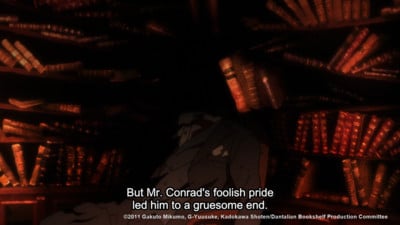
That also made me respect Anno’s founding of
Khara and the
Rebuild of Evangelion project more. He was coming from a place where he saw how poorly the animators for the original
Evangelion were paid, so
Rebuild was a do-over both in the narrative and managerial senses.
We should also note that Gainax‘s demise was protracted as hell. At the latest, everyone could see the writing on the wall in 2019 when their executive’s arrest prompted Anno and Khara to firmly and publicly cut the last illusions of their ties to the place. The studio wasn’t bouncing back from that. It wasn’t bouncing back long before that. All that was left was to wait for the inevitable.
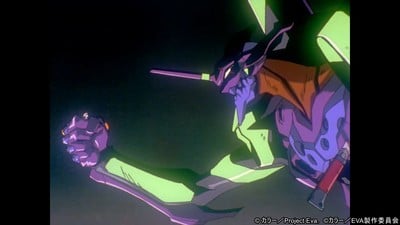
Yeah,
Gainax did what a lot of failing production companies do: lie about new projects in a desperate attempt to get some cash flow from investors. I made a joke about those vaporware titles, but they (or their pseudo-subsidiaries like
Gaina) kept insisting they could revive their biggest names while secretly selling off their IP rights to keep the lights on. That’s how we got four
FLCL sequels, by the way. So we can add this thing to the executives’ list of sins:
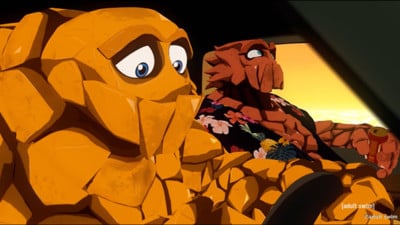
“Never knows best,” indeed. Though, again, it’s another salient reminder that IPs and studios are easy to overvalue. While Gainax certainly deserves a eulogy, I can’t say I’m going to miss it.
It’s certainly comforting to know its biggest champions have long since landed on their feet and are well on their way to cementing their legacy as artists without all the baggage of their old workplace. They’ve proven they don’t need Gainax to make great stuff. That’s why, next time I catch any of you calling Gurren Lagann a Trigger show, I’m locking you in the basement where I keep the people who say DARLING in the FRANXX is a Trigger show.
Anybody choosing to talk about
DARLING in the FRANXX in the year 2024 probably deserves to be locked up regardless.
But studios like Trigger and Khara certainly seem to prove that you can take Gainax‘s bad example and make something better out of it. I think Trigger‘s track record has been more consistent than Gainax‘s, and I’m eager to see what Khara can do now that they’ve freed themselves from Evangelion‘s big purple and green yoke. These are the silver linings on Gainax‘s dark (and now bankrupt) cloud.
Also, if anyone likes anything from those folks, I’d highly suggest hunting down the various Japan Animator Expo shorts that Khara sponsored years ago. There are a ton of cool, creative, and interesting productions that are practically the greatest hits for the kinds of stuff you think of when you think of “Gainax.” You’ve got cool mecha action, vibrant music videos, contemplative short stories, and an even insatiable horniness, sometimes all at once.
Oh yeah, I loved those. Anime, against all odds, can be pretty rad sometimes.
I guess the moral of the story here is that the next time you find yourself producing a television series that completely realigns its genre and practically merchandizes itself into infinity, consider directing that cash flow back into the workers who got you there. It’s a better investment than the alternative.

I’m sure that’ll happen someday! Or we’ll be back here in 5-10 years talking about
MAPPA‘s insolvency. Who can say?

The Otaking is dead. Long live the Otaking.
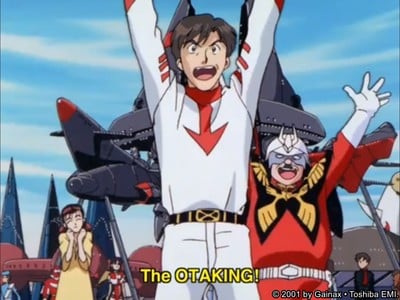

















![For the Fans[ervice] - This Week in Anime](https://theanimenews.net/wp-content/uploads/2024/11/1732205217_For-the-Fanservice-This-Week-in-Anime-390x220.webp)
